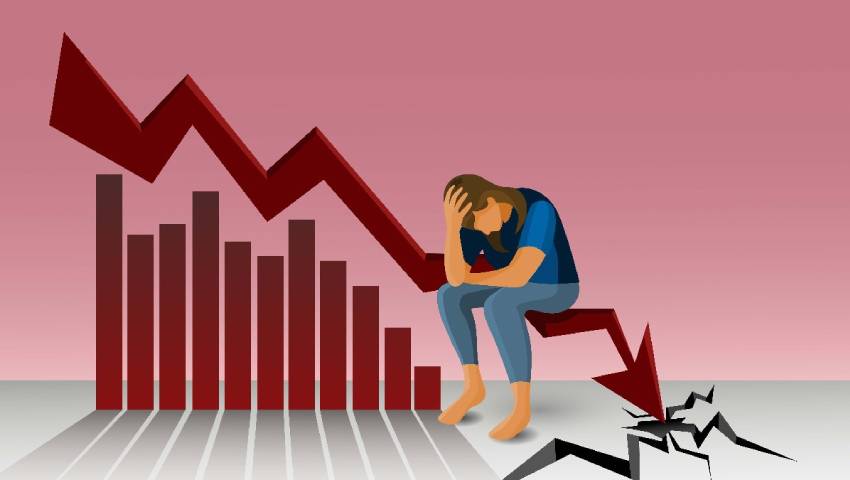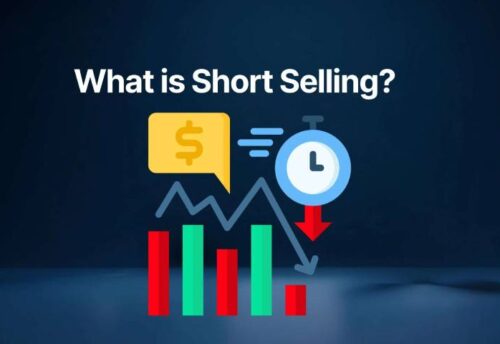
- 24/10/2025
- MyFinanceGyan
- 234 Views
- 3 Likes
- Share Market
Lessons from the Biggest Trading Losses in History: What Every Trader Should Know
The history of financial markets is filled with dramatic stories of massive trading losses — events that not only shook Wall Street but also changed how the world views risk, leverage, and financial regulation.
These multi-billion-dollar disasters serve as painful reminders that even the most experienced traders, hedge funds, and financial institutions can fall victim to poor risk management and unchecked ambition.
Understanding what went wrong in these cases offers invaluable lessons for anyone involved in trading or investing.
Introduction:
Successful trading requires skill, insight, discipline, and robust risk management — but history proves that a single misstep can erase years of profits in days.
From excessive leverage and poor oversight to overconfidence in models and human error, the biggest trading losses in history reveal recurring patterns of failure.
This blog explores some of the most infamous trading collapses, analyzes what caused them, and extracts practical lessons that can help modern traders avoid repeating these costly mistakes.
The Biggest Trading Losses: Case Studies
1. Bill Hwang and Archegos Capital Management – $20 Billion Loss (2021)
In 2021, Bill Hwang, founder of Archegos Capital Management, suffered one of the largest personal trading losses in history — about $20 billion in just two days.
Using total return swaps, Hwang built highly leveraged, concentrated bets in a handful of stocks. When ViacomCBS shares plunged after a secondary offering, margin calls triggered a rapid sell-off that wiped out Archegos and inflicted heavy losses on major banks like Credit Suisse ($4.7B) and Nomura ($2B).
Key Lessons:
- Excessive leverage can magnify both gains and catastrophic losses.
- Concentrated positions dramatically increase portfolio risk.
- Complex, opaque instruments can obscure true exposure.
- Strong regulatory oversight is vital to prevent systemic risk.
2. Nick Leeson and Barings Bank – £827 Million Loss (1995)
Nick Leeson, a derivatives trader at Barings Bank, caused its collapse by concealing massive losses in a secret account.
Leeson doubled down on risky Nikkei futures trades, and when an earthquake hit Japan, the market tanked — wiping out the 233-year-old institution.
Key Lessons:
- Lack of segregation between trading and settlement functions enables fraud.
- Concealment of losses worsens financial damage.
- Internal controls and independent oversight are essential in financial institutions.
3. Long-Term Capital Management (LTCM) – $4.6 Billion Loss (1998)
LTCM, a hedge fund run by Nobel laureates, leveraged sophisticated quantitative models to profit from bond arbitrage.
However, when Russia defaulted on its debt, market correlations broke down, and LTCM’s overleveraged positions imploded — turning $5 billion in equity into near bankruptcy.
A Federal Reserve–led $3.6 billion bailout prevented a global financial crisis.
Key Lessons:
- Excessive leverage leaves no margin for error.
- Quantitative models can fail in extreme market conditions.
- Large financial institutions can pose systemic risks requiring regulatory intervention.
4. Howie Hubler and Morgan Stanley – $9 Billion Loss (2007)
During the subprime mortgage crisis, Howie Hubler, a trader at Morgan Stanley, lost nearly $9 billion — one of the largest single trading losses ever.
Hubler profited from shorting risky mortgage bonds but simultaneously sold insurance on supposedly “safe” AAA-rated bonds — which later collapsed.
Key Lessons:
- Misjudging correlated risks in complex derivatives can be disastrous.
- Overconfidence and poor risk pricing often precede huge losses.
- Recognizing losses early is better than doubling down.
5. Amaranth Advisors – $6.6 Billion Loss (2006)
Hedge fund Amaranth Advisors collapsed after losing $6.6 billion on speculative natural gas futures.
The fund’s exposure was dominated by a few massive positions in volatile energy markets, leaving it vulnerable to sharp price swings.
Key Lessons:
- Concentrated bets in volatile markets are extremely risky.
- Internal oversight and independent risk review are vital.
- Diversification and prudent position sizing protect against collapse.
Common Themes and Lessons from Major Trading Failures:
1. Effective Risk Management is Non-Negotiable
Most massive losses stem from poor risk control.
Common errors include excessive leverage, ignored stop-losses, and inadequate capital buffers.
Traders should apply strict risk management — such as limiting exposure to 1–2% per trade — to survive unexpected market moves.
2. Discipline and Emotional Control Matter
Many blow-ups occurred because traders tried to “win back” losses.
Emotional trading leads to impulsive decisions and magnified mistakes.
Sticking to a plan, staying patient, and keeping emotions in check are key traits of successful traders.
3. Diversification Reduces Catastrophic Risk
Concentrated portfolios magnify downside risk.
Spreading exposure across different sectors or instruments cushions the impact of one trade going wrong.
4. Transparency and Internal Controls Prevent Disasters
Institutions like Barings Bank and Société Générale collapsed due to weak oversight and concealment of losses.
Robust governance, transparency, and regular audits are essential safeguards.
5. Know What You're Trading
Complex financial instruments can hide dangerous exposures.
Traders must understand the mechanics, counterparty risks, and market dynamics of every product they trade — especially derivatives.
6. Regulation Protects the Financial System
Regulatory oversight helps identify excessive risk-taking and prevent systemic contagion.
Post-crisis reforms after LTCM and 2008 have improved market stability, but vigilance remains crucial.
How to Avoid Major Trading Losses: Practical Strategies?
- Set Clear Trading Plans – Define entry, exit, and stop-loss levels before executing trades.
- Use Leverage Conservatively – Avoid borrowing excessively, especially in volatile markets.
- Diversify Holdings – Spread investments across assets to reduce single-point failure.
- Prioritize Risk Management – Use position sizing and monitor exposure continuously.
- Leverage Data & Technology – Use analytics tools for real-time insights and risk detection.
- Keep Learning – Stay informed about evolving market trends, instruments, and macro risks.
- Control Emotions – Don’t let greed or fear drive your trading decisions.
- Ensure Internal Transparency – Implement strict oversight and reporting mechanisms.
Conclusion:
The biggest trading losses in history — from Archegos to Barings Bank — underscore timeless truths:
excessive leverage, lack of risk management, and overconfidence can destroy even the largest institutions.
By studying these failures, traders and investors can develop stronger safeguards, smarter strategies, and a mindset rooted in discipline rather than speculation.
Trading will always involve risk — but with awareness, diversification, and sound management, those risks can be controlled.
Learning from past mistakes is not just wise; it’s essential for lasting success in financial markets.
Disclaimer: The views expressed in this article are personal and intended solely for educational purposes. They are not investment advice or product recommendations.



